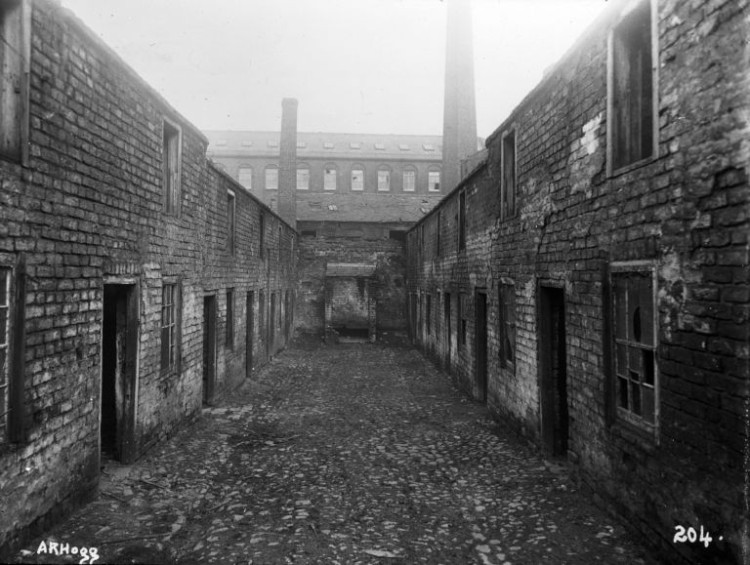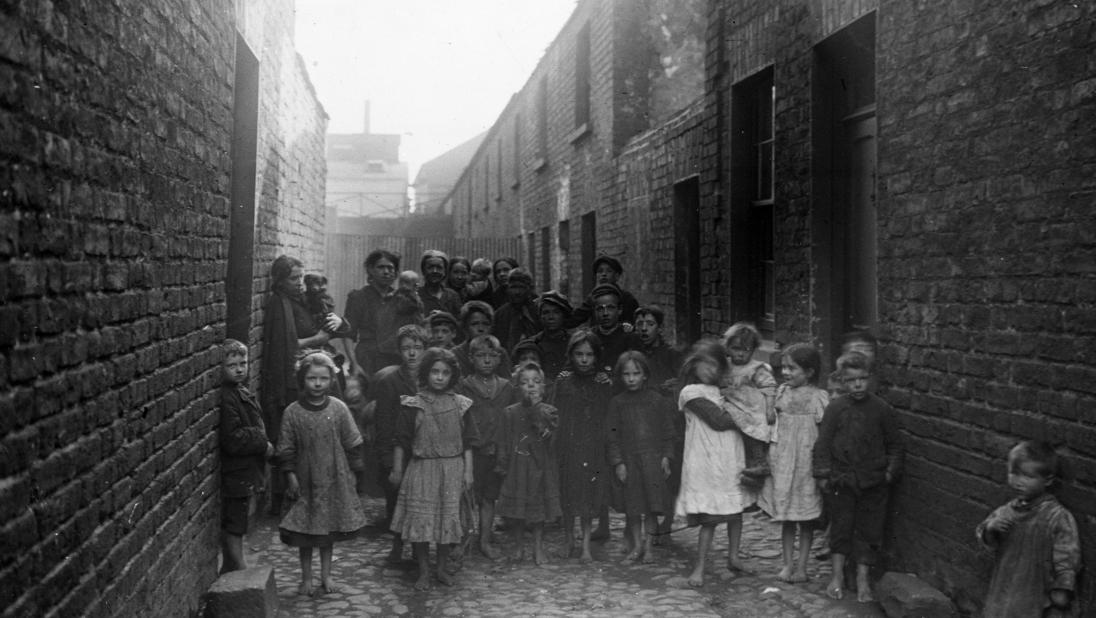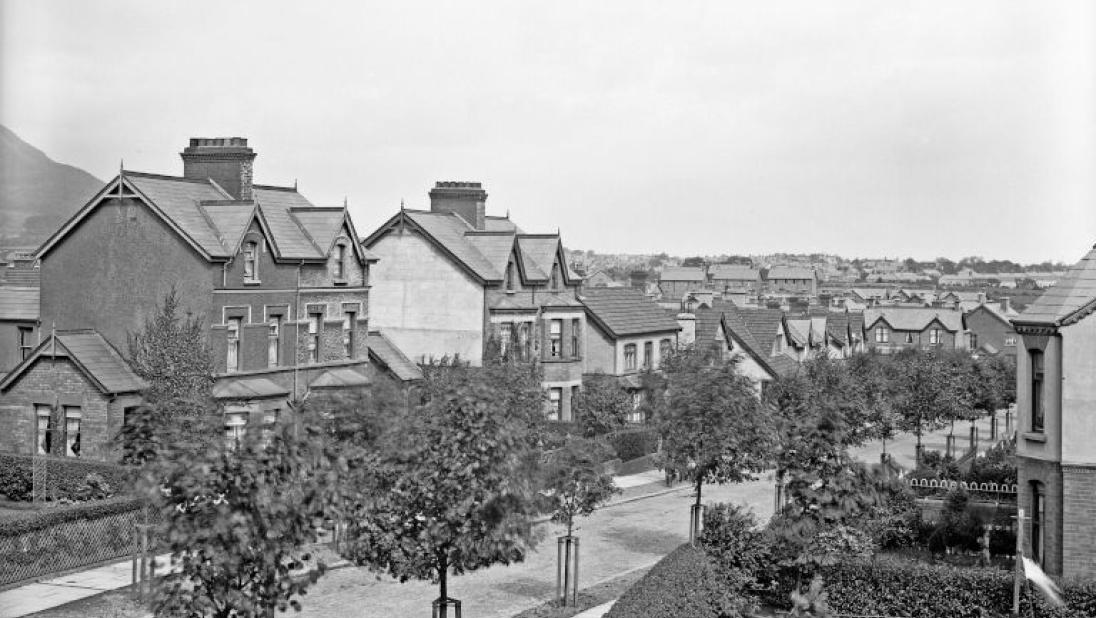Social and cultural history
Numerous buildings are captured within our extensive photographic collections. Among these are images of people’s homes. Some of these photographs were commissioned with this purpose, while in others, houses appear incidentally.
As representations of how and where people lived, these photographs are an opportunity to explore local social and cultural history.
Most were captured in the north of Ireland and display a wide range of dwellings, from country cottages and inner-city slums to suburban homes and castles. As well as recording housing over the course of many decades, these collections cross urban-rural and class divides. Some were taken to showcase luxury, while others were taken to record poor housing due for demolition.
Bangor Castle
Constructed in 1852 for Robert Edward Ward, a descendant of the third son of the first Viscount Bangor, Bangor Castle was later inherited by his only daughter, Matilda Catherine Maud (Lady Clanmorris), who married the 5th Baron Clanmorris. Lady Clanmorris retained possession until her death in 1941, when the building and 150 acres of park land were sold to Bangor Borough Council for £35,000.[1]
These photographs, taken by Robert Welch, show the interior and exterior of the Castle. While undated, they were most likely taken between 1910 and 1930, during which time the house was inhabited by the Clanmorris family. These images convey the grandeur and opulence of the home, while recording intricate, personal details of ornaments and furnishings.
Photographs of Carrowdore Castle, Dublin Castle, Stormont Castle, Castle Shean/Jordan’s Castle and Quintin Castle can also be found within National Museums NI’s digitised photographic collections.
Belfast Slums
Between 1912 and 1915, Alexander Hogg (1870-1939) took over 200 photographs for Belfast Corporation of housing that was due for demolition under the Belfast Improvement Order of 1910. Some of these images are contained in National Museums NI’s photographic archive. As well as providing a record of poor-quality inner-city housing, many capture people, mainly women and children. Much of this housing was occupied by those employed in the city’s industries, including Belfast ship yard and the local linen mills.
Middle Class Suburbs
Historian Alice Johnson explains that ‘Upward mobility of the Belfast elite was symbolised by moving house: the mid-century saw Belfast’s growing suburbs on the Malone Ridge and Antrim Road attract more and more people away from the traditional bourgeois streets of Donegal Place and College Square’.[2] These photographs taken by W. A. Green (1870-1958) represent some of the homes that were built in the wave of middle-class suburban development.
The Rural Cottage
Many images of rural living, which stand in great contrast to the city’s slums and suburbs, are also held in the collections. While Belfast had become an industrial city, most of Ulster and Ireland remained predominantly rural. These photographs may be reflective of how many people lived. However, it must be remembered that the photographers who took them knew what images appealed to commercial audiences. They had interests in recording old rural craft and customs, Irish ethnography, and creating idyllic picture postcards.[3]
The Ideal Home
As well as recording homes that were lived in, photographs reflect homes that were desired or idealised. A number of images pertain to décor and furnishings that epitomised the ideal of the middle-class home in interwar Northern Ireland, and are reflective of trends in conspicuous consumption.
The Poor House
Due to finance or circumstance, many people were unable to rent or own private dwellings. A number of organisations were able to provide poor and impoverished individuals with a place to stay. These included the Poor House (Clifton House) run by Belfast Charitable Society, and Carrick House, a ‘working men's hotel' set up by Belfast Corporation.
This collections story was written by Dr Lucy Wray. Her PhD focused on the A.R. Hogg photographic collection, in particular how Hogg’s photos represent everyday life in Belfast, and the relationship between the photographer and the city.

































